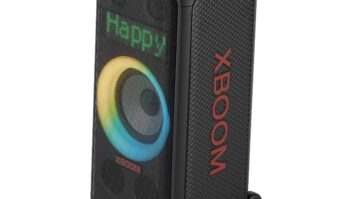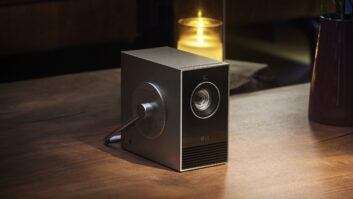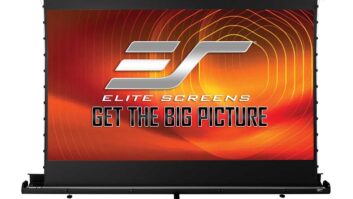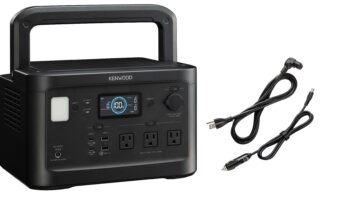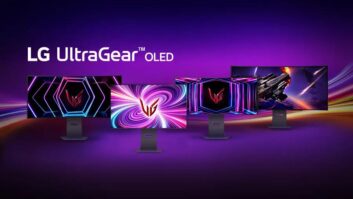SEOUL, SOUTH KOREA – LG plans availability in the U.S. this month of its latest two portable video projectors, one with built-in TV tuner and both with Wi-Fi to display the content of portable devices such as smartphones and laptops.
The Minibeam Pro PF1500 and Minibeam TV PW800, which features built-in TV tuner, join a selection of LG portable projectors priced from $448 to $1,299, some with built-in battery, some with built-in TV tuner, and some with TV tuner and LG’s smart TV technology.
Prices on the new models were unavailable. The LED projectors feature an RGB LED illumination system with estimated 30,000-hour lifespan.
The Minibeam Pro is the company’s top-of-theline portable projector, which delivers FullHD resolution (1,920 by 1,080) and outputs 1400 ANSI lumens at a diagonal image size of 120 inches. Four corner keystone buttons eliminate edge distortion even when the projector isn’t perfectly aligned with a screen. The PF1500 also features an optical zoom to adjust image size without sacrificing sharpness, and it connects via Bluetooth to sound bars, portable speakers and wireless headphones.
It also features 150,000:1 contrast ratio, HDMI, USB and 1.4 throw ratio. It weighs 3.3 pounds and measures 5.2 by 8.7 by 3.3 inches.
The Minibeam TV improves on the existing model PA75K, introduced in 2013, by adding a brighter picture, smaller dimensions, and greater energy efficiency. It delivers 100-inch 1,280 by 800 WXGA images with 800 ANSI lumens of brightness, 100,000:1 contrast ratio, and 1.5 throw ratio. It also features HDMI and USB. It weighs 1.32 pounds and measures 5.5 by 5.5 by 2 inches.
“One of the things we have done, because the current generation of Dolby Atmos AVRs doesn’t include Dolby AC-4 decoders yet, is to support passing the decoded objects and their metadata over HDMI to the AVR to then render for the home theater system,” a spokesperson said.
In the future, Dolby envisions native Dolby AC-4 decoding in AVRs. Even with AC-4-decoding AVRs, however, “the optical connector is unlikely to be used” to accept an AC-4 stream, the spokesperson added.
To play back multichannel content, a format conversion from AC-4 to a codec supported by an AVR “would take place in the TV,” a spokesperson said. Likewise, “decoding to two-channel linear PCM (uncompressed) audio would be an option.”
In further detailing its proposal, Dolby pointed out that the bandwidth of AC-4 streams is about half the size of Dolby Digital Plus, which is used for streaming services.





